In Obesity, Portions Count, New Analysis Reveals
- Email This
- Share Link
Although opinions about nutrition and the real cause of the obesity epidemic abound, a health authority now gives the real scoop: portion size is responsible.
"Nearly every dish and beverage Americans now consume is supersized compared with what they used to eat," reports Jane Brody of the New York Times in "Forget the Second Helpings. It's the First Ones That Count" (July 06).
"An average serving of pasta is now 480 percent greater than the one-cup recommended serving size, Lisa Young and Marion Nestle, nutritionists at New York University, reported in 2002 in The American Journal of Public Health. Some cookies, they found, are 700 percent larger.
"A New York bagel, now sold nationwide, weighs five or six ounces. That is five or six bread portions, supplying about 500 calories, not counting cream cheese or butter. The muffin tins from my childhood produce muffins one-third the size of those at Starbucks.
"Restaurants like fast-food and takeout establishments, as well as family-style businesses, pile on food with no regard for recommended portions.
"Drinks are in 24-ounce sizes or larger, often with free refills."
Time to recall the maxim "you are what you eat." Or bring a calculator, since Brody reminds the reader to double or triple the calories on the label if eating multiple portions.
One interesting concept is "energy density:" foods with low energy density (calories per weight) -- like fruits and vegetables -- are better, since people tend to eat the same weight of foods each day.
 The Practice of Integrative Medicine: A Legal and Operational Guide is now available from Springer.
The Practice of Integrative Medicine: A Legal and Operational Guide is now available from Springer.
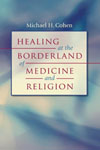 One of the transformations facing health care in the twenty-first century is the safe, effective, and appropriate integration of
One of the transformations facing health care in the twenty-first century is the safe, effective, and appropriate integration of
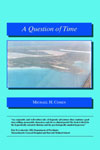 Michael H. Cohen's novel A Question of Time is about consciousness. Gabriel Goodman takes a vacation from his law firm
Michael H. Cohen's novel A Question of Time is about consciousness. Gabriel Goodman takes a vacation from his law firm
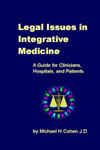 Legal Issues in Integrative Medicine: A Guide for Clinicians, Hosptials, and Patients by Michael H. Cohen (National Acupuncture Foundation,
Legal Issues in Integrative Medicine: A Guide for Clinicians, Hosptials, and Patients by Michael H. Cohen (National Acupuncture Foundation,
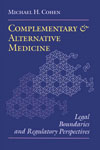 In Complementary and Alternative Medicine: Legal Boundaries and Regulatory Perspectives, Michael H. Cohen breaks new ground in putting together the
In Complementary and Alternative Medicine: Legal Boundaries and Regulatory Perspectives, Michael H. Cohen breaks new ground in putting together the
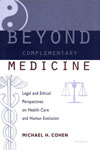 In Beyond Complementary Medicine, Michael H. Cohen goes deeper into the legal, ethical, and regulatory aspects of integrating complementary and
In Beyond Complementary Medicine, Michael H. Cohen goes deeper into the legal, ethical, and regulatory aspects of integrating complementary and
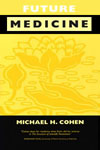 Future Medicine by Michael H. Cohen is an investigation into the clinical, legal, ethical, and regulatory changes occurring in our
Future Medicine by Michael H. Cohen is an investigation into the clinical, legal, ethical, and regulatory changes occurring in our
 What happens when a Wall Street lawyer, steeped in Judaism, enters an interfaith seminary, engages mystically, and connects with disincarnate
What happens when a Wall Street lawyer, steeped in Judaism, enters an interfaith seminary, engages mystically, and connects with disincarnate